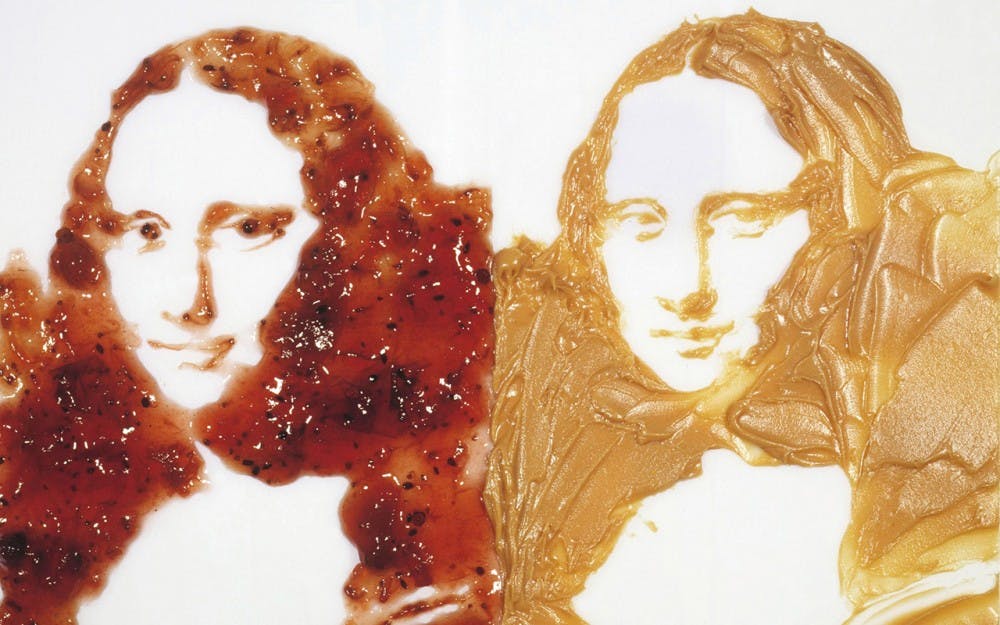One of the two latest special exhibitions coming to the Eskenazi Museum of Art invites the viewer to look twice before they can truly understand what they see.
Unlike other exhibitions, which include the physical works, this exhibition, “Vik Muniz,” features mostly photographs of artist Vik Muniz’s works.
Director David Brenneman said Muniz’s largely performance-based pieces were originally made with the intention to be dismantled, so most of the physical works no longer exist.
“The performance is the act of putting the thing together, photographing it, and the performance is disbanded,” Brenneman said. “It’s sort of like a Buddhist or Tibetan sand mandala. They’re done very carefully, precisely, then they’re swept together and swept up. That’s really what happens with Vik’s work.”
Muniz will speak to interested students and community members about his career and his art at 5:30 p.m. Friday in Fine Arts 015.
The exhibition will be opening to the public at 6:30 p.m. Friday in the Special Exhibitions Gallery alongside Anthony J. Moravec’s collection of master drawings “Giambattista and Domenico Tiepolo” that he gifted to the museum.
Brenneman said he has heard Muniz speak once before when he was in Atlanta two years ago and felt fully engaged by the artist both at the talk and at their subsequent lunch.
“He’s someone who is a thinker, someone who must just have ideas firing off every second,” Brenneman said. “When you hear him talk, he will launch into a topic and take you on a ride. By the end of it, I was inspired, my thoughts were provoked, I wanted to learn more about him as a human being.”
Curator Nan Brewer said she has heard the artist lecture before and felt he was a delightful speaker with a distinctive thought process as he goes into each creative work throughout the discussion.
“He has this curiosity that you can see in his works,” Brewer said. “He’ll think, ‘Oh, what about that, I’ll try that,’ and get into the challenge of ‘How does one make a sandcastle on a grain of sand?’ He has that kind of exuberance that comes out. What I really love about his works is they’re fun, they’re engaging, but they’re thoughtful and smart.”
Brenneman said there are three elements that define Muniz’s work: the performance aspect; the trompe l’oeil, or trick of the eye; and the social engagement of the artist.
The traditional trompe l’oeil was crafted by a classical artist who painted an image of a bird eating fruit that audiences saw and assumed was a real bird, Brenneman said.
Unlike this legend of the art world, Muniz’s tricks have less to do with crafting a false reality and more to do with the unconventional materials he uses to make the works.
“His trick is that you know the image that you’re seeing at a distance — you know that it’s the Mona Lisa, for example — but when you look at it closely, you realize it’s made out of peanut butter and jelly,” Brenneman said.
Brewer said the mystery of the work invites viewers to move around a space to get the full effect and view both from a distance and up close, which was one of the major considerations she had to deal with while curating this particular exhibition.
“You want to have a floor space that allows them to have that interplay and that interaction with the art, which is a little different than some of the two-dimensional work I have dealt with,” Brewer said. “You know you’re going to get that give and take and look again.”
Brenneman said though much of the work does deal with playful media, the subject matter can also touch on heavier themes, which fall in line with the social good role Muniz plays.
One example is his “Sugar Children” series, in which he crafts images of children out of sugar on black paper.
Upon further examination, it becomes clear that these are depictions of the children made to harvest this sugar.
Brenneman said Muniz as an artist has the goal of helping people.
In Rio de Janeiro, he worked on a film called “Waste Land,” which was produced by IU alumnus Angus Aynsley. Muniz is still in touch with the waste pickers, who were working in extremely poor conditions, highlighted in the film.
“His work is really about getting people to think about our shared humanity, and he provides a really interesting way into that conversation,” Brenneman said.




